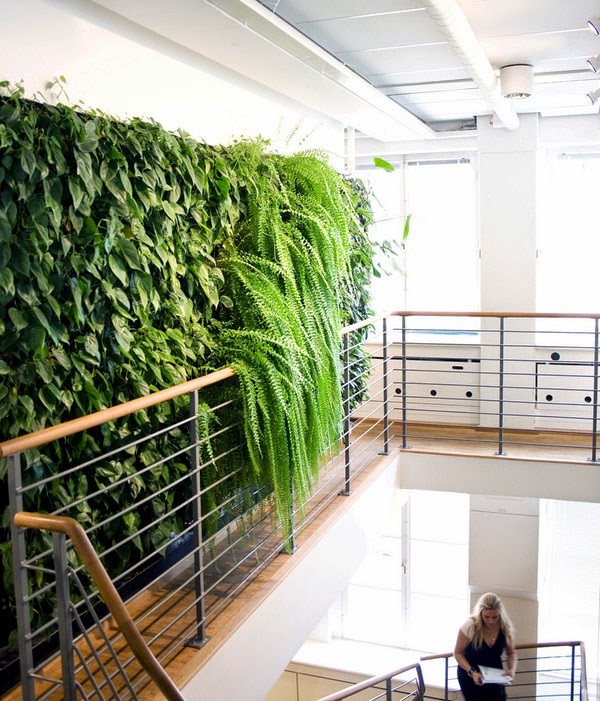The vertical gardens are a landscape design concept that has an ancient origin. Today is a concept that applies increasingly more both in building facades and households, also as a way to make living green sculptures in urban public spaces.Vertical gardens are definitely practical add-ons to homes. One of its advantages is that you can grow and harvest your own fruits, vegetables, herbs and crops. It is a lot safer too since you can ensure proper handling of the plants by avoiding use of chemicals. You can also save yourself from the stress and be able to set aside some money since fresh produce can be found right in your garden.

The firm Greenworks and more specifically Lisa Wacklin designers and Per Berglund, in 2008, created a vertical garden model very original and contemporary to place indoors. The design is called Moving Hedge and consists of a base material with a small wall surface which acts. There are installed plants, climbing type, which begin to grow vertically.
The idea is to allow the plants to become part of our interior designs in a more modern, forgetting pots low and boring. These panels can be grouped to form a lineup of vegetables that we can use as a room divider . purifying the air and giving it an air of life to our spaces.
A vertical garden is typically crafted from metal or wood structures, it also contains small pods in which the flora is planted. This style of indoor gardening may need soil, an adequate substitute or nothing at all. Some indoor garden systems use hydroponics which evenly disperses water and nutrients necessary for the plants to flourish. This does not require soil as it typically supplies only the root structure. A pump will carry the water to the top of the structure and then lets the water flow down which allows each plant to receive the necessary moisture with minimum involvement from the indoor gardener.

The choice of plants largely depends on the location. A single vertical indoor garden provides various small habitats with many different variants in both light and temperature. A few plants are very adaptive to most environments and include button ferns, Ficus benjamina, croton and Dracaena. Root space is extremely limited, so plants that grow well in shallow soil would be most suitable. If you choose to incorporate epiphytes like bromeliads or orchids, they should be planted towards the top of the structure.
At its base are a container where water is deposited regularly, so it is not necessary to water the plants daily as this system allows plant roots have access to water when they need it.
This practical and innovative model of vertical garden is a great idea for these designers that allows us to give a touch of modernity and freshness to our home or office.






0 comments:
Post a Comment